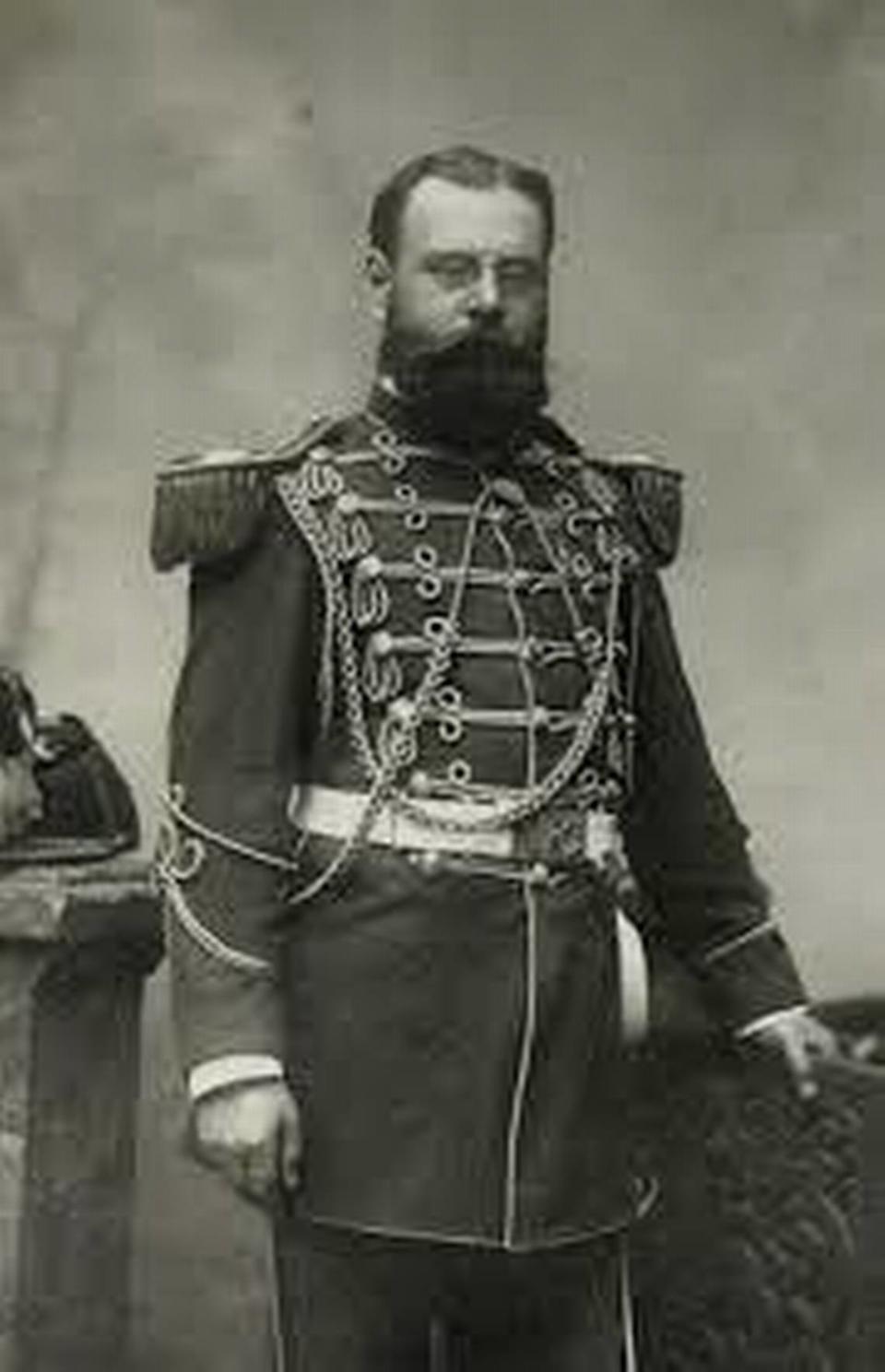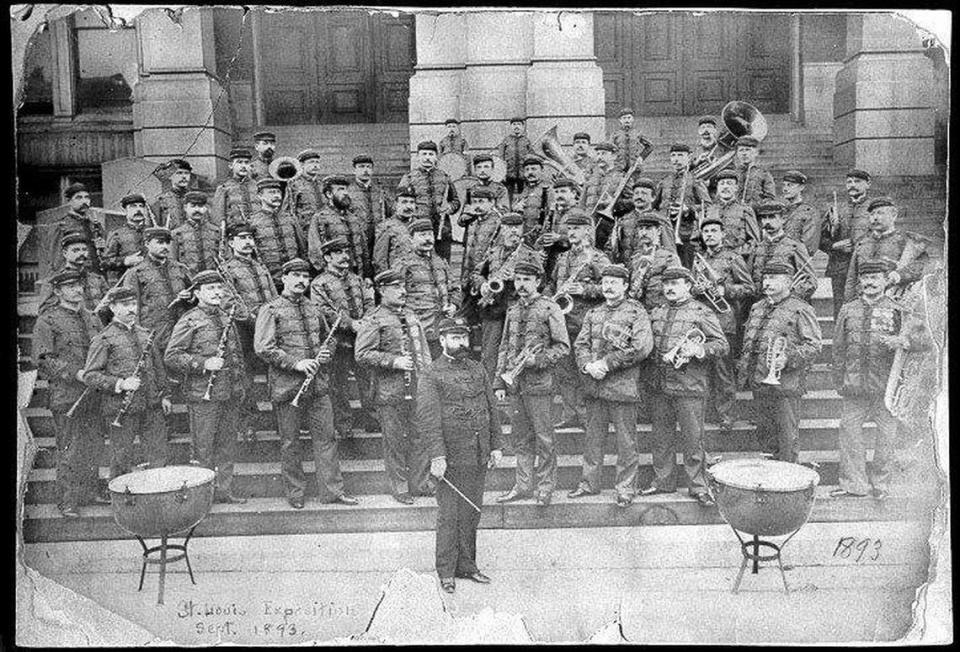This conductor wrote famous marches, traveled the world and made 8 stops in Fort Worth
- Oops!Something went wrong.Please try again later.
Arguably, the most popular early 20th-century visitor to Fort Worth (after Theodore Roosevelt) was bandleader John Philip Sousa.
Both were headliners in their day. Roosevelt came to town twice (1905 and 1911) while Sousa visited eight times between 1895 and 1928.
Roosevelt blew through town like a tornado while Sousa stayed overnight, mixed with ordinary folks, and gave numerous interviews. Sousa was a public relations dream. Roosevelt left behind a tree that he planted in front of Carnegie Library, which soon died. Sousa composed a piece of music inspired by his last visit to Fort Worth that is still played today.
Sousa rose to prominence directing the U.S. Marine Band from 1880 until 1892. Besides conducting, he also wrote music of lasting importance. He made the Marine Band the finest band in the United States, earning them the title, “The President’s Own.”

In 1892 he left the Marines to start his own band, which he led for the next 39 years, earning a new title, “the American March King.” They performed 15,623 concerts in theaters and concert halls on both sides of the Atlantic, performing both classical and pop favorites and original compositions. Sousa did more than wield the baton. He was also the company’s business manager and booking agent.
Their first appearance in Fort Worth was in May 1895 while they were crisscrossing the country on a national tour. Sousa was back in 1895 with his 50-piece band and a soprano vocalist. They played sold-out matinee and evening performances at Greenwall’s Opera House. His visit was such an event, railroads offered special “excursion fares” to Fort Worth from anywhere in Texas. Ticket prices at Greenwall’s ranged from 50 cents to $1 (box seats).
They got what the newspaper called a “royal” welcome, Cowtown style. The Fort Worth Gazette gushed, “There are few more widely known musical organizations in the world and none in America than Sousa’s band.” The program was an audience-pleasing mixture of Southern favorites like “My Old Kentucky Home” and classical compositions by Wagner and Liszt. They also performed a couple of Sousa originals.
That first visit was arranged by St. Andrew’s Episcopal Church, which guaranteed his fee. The church had no doubt they would recoup their expenses because a Sousa performance was guaranteed to be a sell-out.
The man was a genuine celebrity like Glenn Miller or Lawrence Welk for later generations. He played what he called “music for the masses,” not the high-brow stuff of the typical symphony orchestra.
Sousa and the band were back in town in 1902 as part of a tour that would take them across the U.S. and Canada. A tight schedule limited them to just one performance, a Wednesday matinee at Greenwall’s Opera House.
His next visit to Fort Worth came in February 1906, Greenwall’s again. His 50-musician band now included woodwinds, drums, and a harp. They ended the program with the ever-popular “Stars and Stripes Forever” and a new march composed by Sousa.
Five years later they were back in town for a one-night performance at Byers Opera House (formerly Greenwall’s), performing a mixture of foot-stomping marches and light classics from Wagner and Tschaikovsky plus, in a concession to current tastes, one of the new “ragtime” numbers made popular by Scott Joplin. Still, what the audience liked most were two new Sousa marches, “Dwellers of the Western World” and “The Federal,” performed publicly for the first time here. Sousa’s band did not just sit and play; he had them march in together and begin playing by section.
Sousa’s most publicized appearance to date came on Christmas eve, 1919, when the band did two shows in the Chamber of Commerce auditorium arranged by the Fort Worth Harmony Club. The Fort Worth Record, asked rhetorically, “Why do people flock to hear his music?” and answered, “Because the Sousa Band had a sound like no other.” The newspaper’s music critic called Sousa the “Pied Piper” of American music.
He was back in Fort Worth on Jan. 18, 1922, for appearance number six. The Harmony Club booked him again, this time into the First Baptist Church auditorium for a matinee and an evening performance.
By this time, the band had grown to 100 members with eight featured soloists. The logistics of getting the company around from city to city was akin to a military operation. It required making arrangements to transport and feed them, provide accommodations, and pay them regularly. Sousa did it all for more than 30 years on 31 national tours and 14 international tours. In 1924 alone, more than 3 million people heard the Sousa band, more than any other American musical performer.

They returned to Fort Worth in January 1924. At the train station to greet them were the American Legion and the Boy Scouts in force, plus hundreds of fans on their own. The band was booked into First Baptist Church again, but this time on a Monday night.
The 70-year-old bandmaster did not disappoint. The audience burst into applause when he lifted his baton, applauded wildly after every number, and gave him a standing ovation after the last number, “Stars and Stripes Forever,” naturally. They also performed a brand-new Sousa march, “Nobles of the Mystic Shrine,” for the first time. The Star-Telegram’s music critic called it a “masterful concert.”
By 1925, Fort Worth had become a regular stop on Sousa tours. A Dec. 3 visit was sponsored by the Moslah Shriners, playing a matinee and an evening performance at First Baptist Church. The 71-year-old bandleader was as energetic as ever. Keeping up with the times, he added a new piece to the program, “Jazz America,” which had suspicious march overtones. Following Sousa’s usual practice, the matinee was for schoolchildren only. The school board acknowledged the honor by letting any child with a ticket out early.
Sousa and his band played Fort Worth for the last time in 1928 as part of his “Golden Jubilee Tour” celebrating 50 years on the road. By this date the U.S. Navy had officially conferred the emeritus rank of lieutenant commander on him in recognition of his many years of service to the nation. He still conducted in the same uniform he had worn when he retired. He brought with him 100 musicians and vocalists and did two concerts on Nov. 19, one for schoolchildren and one for the general public. Tickets for the evening performance ranged from $1 up to $2.50 for the best seats in the First Baptist Church auditorium.
The big story of this last appearance was that 1,700 faculty, students, and supporters of the College of Industrial Arts (CIA) in Denton presented him with a petition when he got off the train asking him to compose a special march for their school — soon to be rebranded Texas State College for Women (today Texas Woman’s University). Sousa expressed surprise and said he had never received such a request. Impulsively, he agreed to compose something for them. Within a year he had a new march ready to perform; all it needed was a name. College administrators proposed “Daughters of Texas March,” and that is the name by which it is performed today. (Another proposed name he rejected, thank goodness, was “March for the C.I.A.”)
Sousa retired from touring in 1931 and died a year later, on March 6, 1932. By that time, popular musical tastes had passed him by. Americans were into swing music now. But for nearly 40 years, Sousa was the biggest name in American music. He was also the biggest musical celebrity to hit Fort Worth until Van Cliburn arrived 30 years later. It is fair to say Fort Worth adopted Sousa the same way we later adopted Van Cliburn. He was our “Music Man.”
Author-historian Richard Selcer is a Fort Worth native and proud graduate of Paschal High and TCU.

